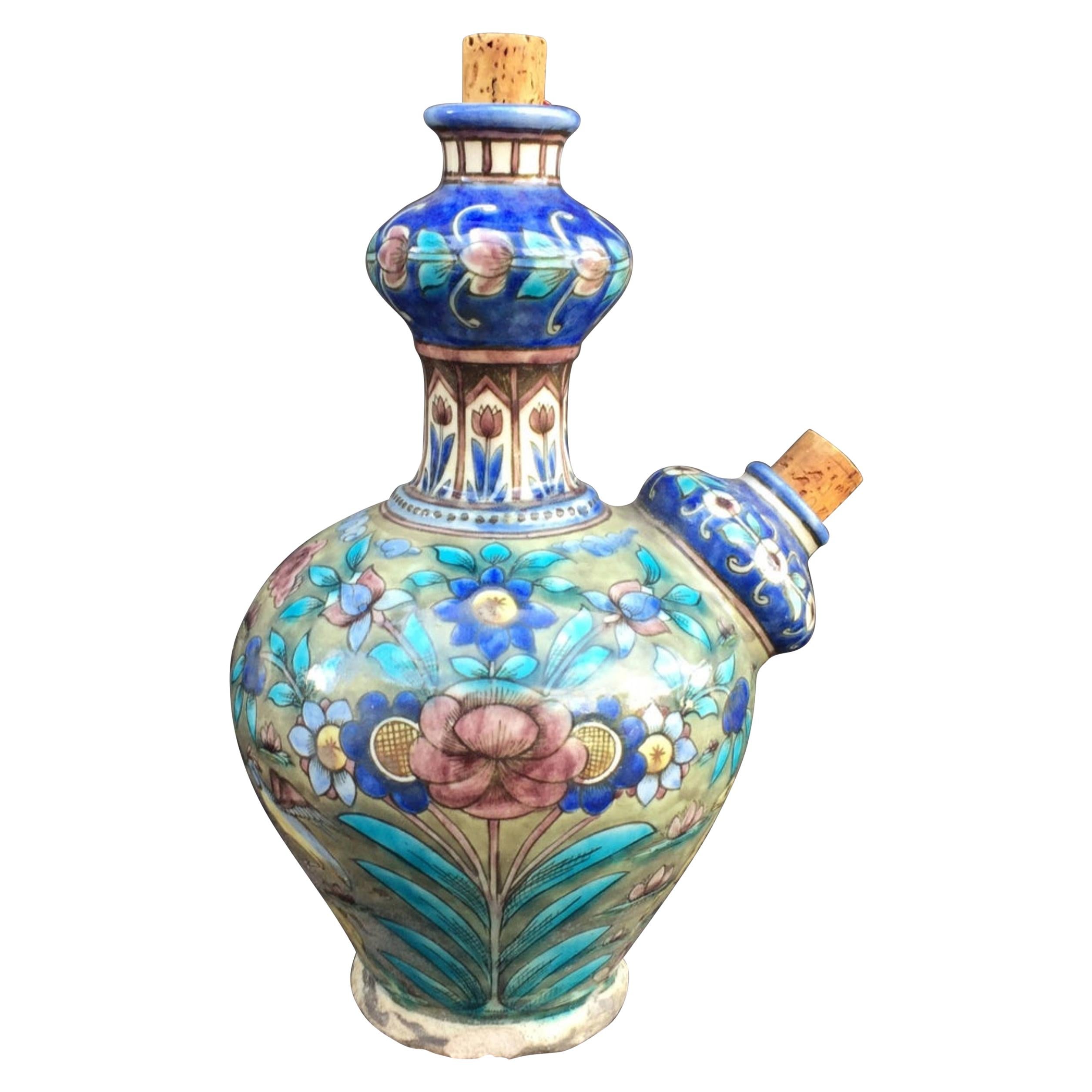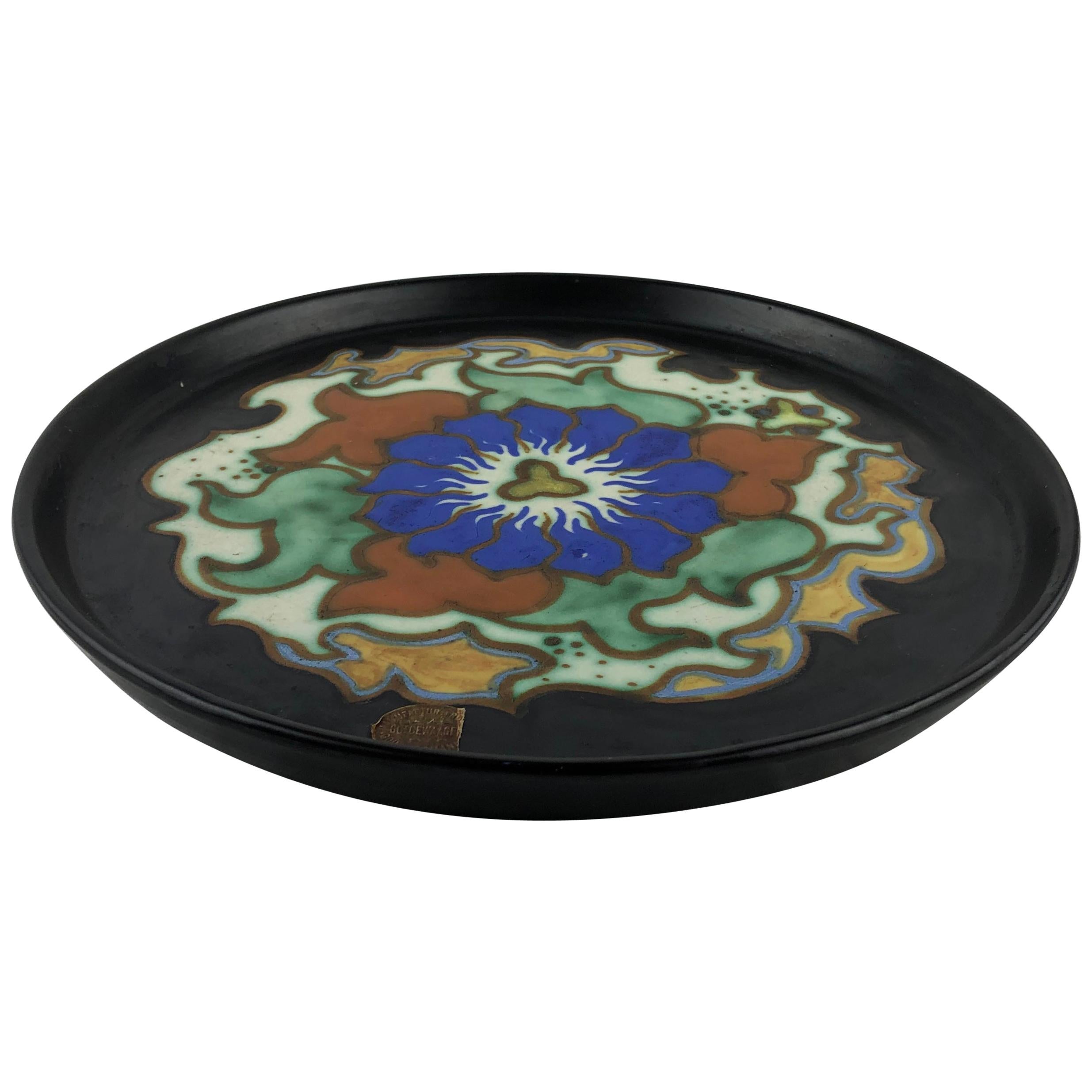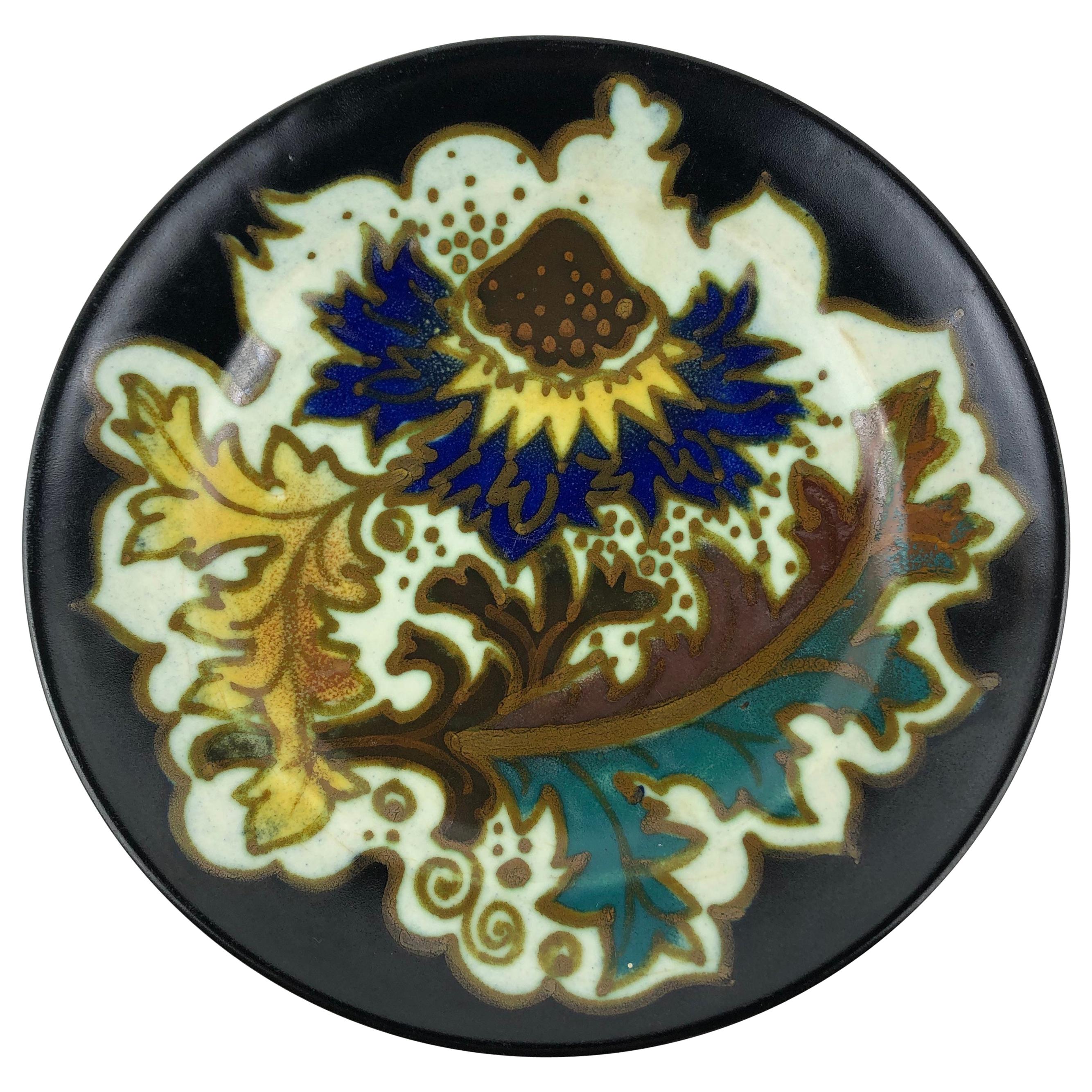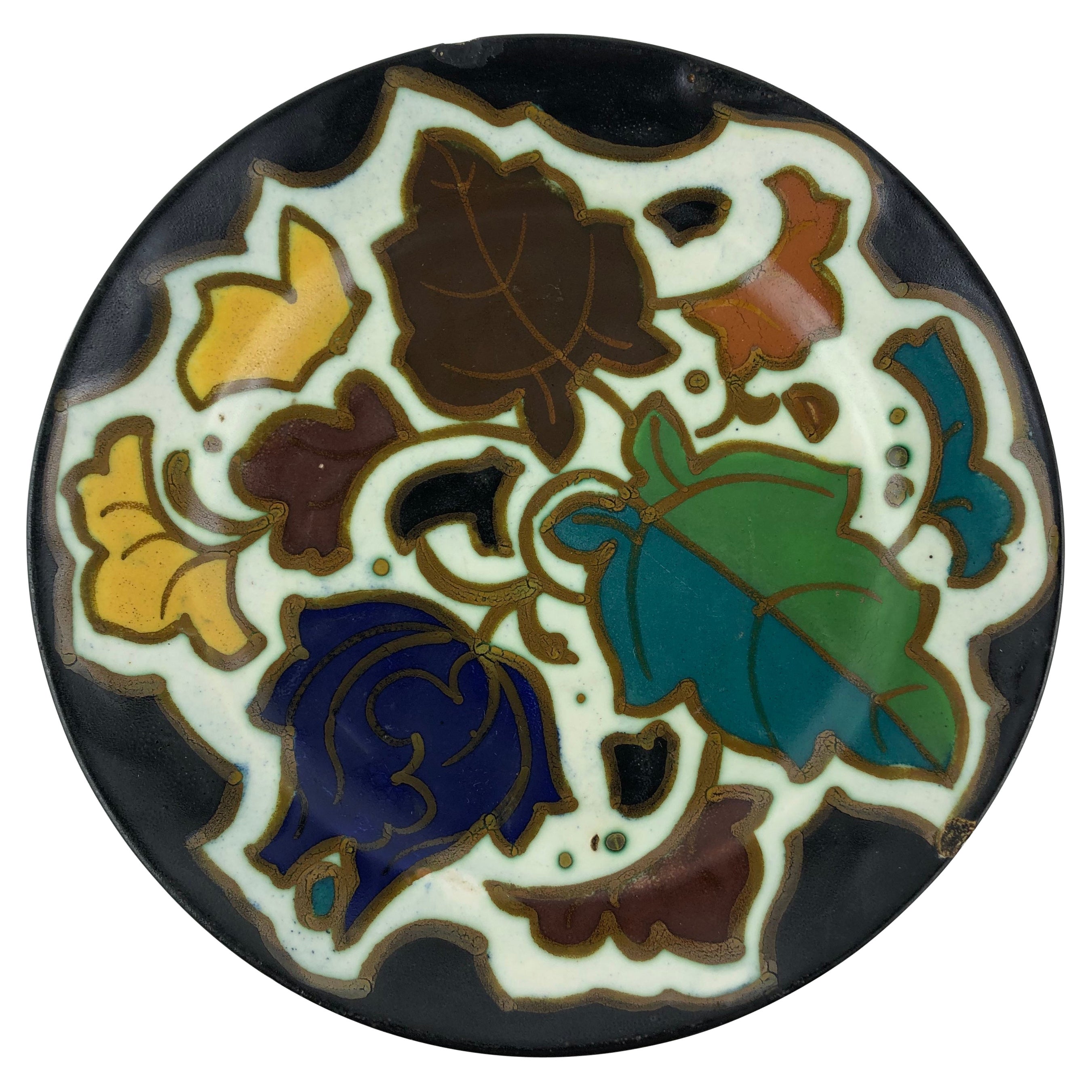Items Similar to Early 17th Century Ottoman Empire Iznik Pottery Dish
Want more images or videos?
Request additional images or videos from the seller
1 of 12
Early 17th Century Ottoman Empire Iznik Pottery Dish
About the Item
An Iznik pottery dish made in the first half of the 17th century and decorated with chrysanthemums and tulips. The rim features the rock and wave pattern.
Under the direction of Ottoman Sultans, Iznik ceramics blended prestigious Chinese porcelain aesthetics with Ottoman and Islamic ideals to achieve the designs seen on the bowl and border of this dish. Made by the best artists imported from across the Ottoman empire between the 15th-17th centuries, these highly-regarded wares served an important role in creating a shared identity for a culturally diverse population and uniting different factions under one centralized system.
Dimensions: 11 1/2 in. Dm x 2 1/4 in. H (29.2 cm Dm x 5.7 cm H)
Condition: Excellent condition for an early 17th-century piece. With expected rim glaze chips. Few areas of glaze loss throughout, the most significant being a 1.5 cm loss of glaze to the upper edge of the bowl. 8 cm hairline running from rim to part of the bowl visible on back and front. A previous owner drilled a hole through the back foot for hanging.
Note: The wire plate hanger pictured has since been removed.
Provenance:
Roseberys, London
Private Collection, Greece.
- Dimensions:Height: 2.25 in (5.72 cm)Diameter: 11.5 in (29.21 cm)
- Style:Islamic (In the Style Of)
- Materials and Techniques:
- Place of Origin:
- Period:Early 17th Century
- Date of Manufacture:First Half of the 17th Century
- Condition:With expected rim glaze chips. Few areas of glaze loss throughout, the most significant being a 1.5 cm loss of glaze to the upper edge of the bowl. 8 cm hairline running from rim to part of the bowl visible on back and front.
- Seller Location:Fort Lauderdale, FL
- Reference Number:
About the Seller
5.0
Vetted Seller
These experienced sellers undergo a comprehensive evaluation by our team of in-house experts.
Established in 2020
1stDibs seller since 2021
30 sales on 1stDibs
Typical response time: 6 hours
- ShippingRetrieving quote...Ships From: Fort Lauderdale, FL
- Return PolicyA return for this item may be initiated within 2 days of delivery.
More From This SellerView All
- William Moorcroft Green and Gold Florian Ware GobletBy William MoorcroftLocated in Fort Lauderdale, FLA decorative pottery goblet created by William Moorcroft for James MacIntyre & Co. in 1903. This goblet is part of William Moorcroft's Green and Gold...Category
Early 20th Century English Art Nouveau Ceramics
MaterialsEarthenware
- Early 19th Century Spode Red Greek Pattern TileBy Josiah Spode, SpodeLocated in Fort Lauderdale, FLA Neoclassical red transferware tile made by Spode 1806-1810, with the ‘Zeus in His Chariot’ pattern. Sir William Hamilton’s Collection of Etruscan, Greek and Roman antiquities, first published in 1766 by Pierre d’Hancarville, was a landmark publication in English design. It intended to disseminate the Antique style through its engravings of Attic pottery. The catalog’s faithful reproductions of Classical vases led British potteries, including Spode, to adapt or even copy the ancient art for modern life. These Spode Greek pattern tiles reflect the major influence of Hamilton’s catalog on English Neoclassicism. The central scene was taken directly from the catalog. This tile can be dated to a narrow window of production in the Spode factory, 1806-1810. During that time, Spode used a technique known as the “Pluck and Dust” method to print in red transfer designs onto creamware. Using this method, source prints were transferred overglaze using tissue imprinted with a very faint rendition of the design outlined in sticky oil. The decorator applied the tissue to the object then carefully “plucked” or pulled it away, leaving the sticky oil design behind. Then, a finely-ground enamel color was “dusted” onto the surface, sticking to any areas that had the oil. A final firing at a low temperature in the enamel kiln made the pattern permanent. The Pluck and Dust technique improved upon bat-printing and enabled larger designers to be transferred. It was short-lived, however, as under-glaze transfer printing soon took over as the preferred method for producing transferwares. Dimensions: 5 in. x 5 in. x 1/4 in. Condition: Excellent. Provenance: The Collection of Nancy and Andrew Ramage Jonathan Horne...Category
Antique Early 19th Century English Neoclassical Pottery
MaterialsEarthenware, Creamware
- Early 19th Century Wedgwood Egyptian Revival Rosso Antico TeapotBy Josiah WedgwoodLocated in Fort Lauderdale, FLA rosso antico teapot made by Wedgwood ca. 1810. The pot's red body is accentuated by black basalt details in the Egyptian Revival style. This ros...Category
Antique Early 19th Century British Egyptian Revival Tea Sets
MaterialsEarthenware
- 16th Century Castelli Italian Maiolica Farnese alla turchina DishBy CastelliLocated in Fort Lauderdale, FLAn extraordinary azure maiolica dish in the Farnese service, made by Castelli d'Abuzzo between 1580 and 1589. In the peak of the High Renaissance, Cardinal Alessandro Farnese commissioned a dinner service from the Castelli maiolica...Category
Antique 16th Century Italian Renaissance Decorative Art
MaterialsMaiolica
- Mid-19th Century Minton Victorian Majolica Game Pie DishBy MintonLocated in Fort Lauderdale, FLA majolica game pie dish made by Minton & Co. in 1864. The dish takes the form of a wicker basket and is covered with oak leaves, acorns, vines,...Category
Antique 1860s English Victorian Serving Pieces
MaterialsEarthenware, Majolica, Pottery
- Early 19th Century Wedgwood Tricolor Jasperware JardiniereBy WedgwoodLocated in Fort Lauderdale, FLA Wedgwood jardiniere with lilac and sage details on a white jasperware ground. Jasperware is perhaps the quintessential Wedgwood clay body and is even considered by some to be a ceramic development on par with porcelain. Originally developed in the 1770s as dyed stoneware bodies (the most ubiquitous of which is pale blue) with applied white figurative decoration in imitation of cameos from the Ancient World, jasperware quickly expanded to a plethora of colorways as per Wedgwood innovation standards. This jardiniere, with lilac and sage decoration on white jasperware ground, is part of Wedgwood’s tricolor jasperware...Category
Antique Early 19th Century British Neoclassical Planters, Cachepots and ...
MaterialsCeramic, Stoneware
You May Also Like
- 17th Century Islamic Iznik Ceramic Pottery Kendi JugLocated in Vero Beach, FL17th century Islamic Iznik ceramic pottery Kendi jug This rare and precious antique Kendi jug is probably from the 17th century and it is excep...Category
Antique 17th Century Turkish Islamic Pottery
MaterialsCeramic
- Early 20th Century Pink S. Hublet Art Pottery Tea PotLocated in Houston, TXThis is a beautiful stoneware vase by S. Hublet, made in Belgium. It has a granite like beige, pink and black surface accented by freeform chevrons on the top and the bottom. The center of this magnificent oversized art pottery tea pot...Category
Antique Early 1900s Belgian Pottery
MaterialsCeramic, Clay, Earthenware
- Gouda Pottery Art Nouveau Decorative Plate/Dish, HollandLocated in Miami, FLDutch Art Nouveau ceramic dish from Gouda, Holland with traditional period flowery and curvaceous designs. Matte glaze, mixture of abstract and floral designs, circa 1920s. Very c...Category
Early 20th Century Dutch Art Nouveau Pottery
MaterialsCeramic
- Gouda Pottery Art Nouveau Decorative Plate or Dish, HollandLocated in Miami, FLDutch Art Deco ceramic dish from Gouda, Holland with traditional period flowery and curvaceous designs, circa 1920s, matte glaze, which for us is the mixture of abstract and floral d...Category
Early 20th Century Dutch Art Nouveau Pottery
MaterialsCeramic
- Gouda Hand Crafted Pottery Art Nouveau Decorative Dish, HollandLocated in Miami, FLDutch Art Deco ceramic dish from Gouda, Holland with traditional period flowery and curvaceous designs. Circa 1920s, matte glaze, which for us is the mixture of abstract and floral d...Category
Early 20th Century Dutch Art Nouveau Pottery
MaterialsCeramic
- Jørgen Morgensen for Royal Copenhagen Midcentury Art Pottery Chicken DishBy Royal CopenhagenLocated in Bishop's Stortford, HertfordshireStunning and heavily made midcentury Danish art pottery bowl designed by Jørgen Morgensen for Royal Copenhagen. Jørgen Morgensen is considered one of the most important potters and sculptors of the 20th century and this very stylish bowl has a central recess with a raised rim relief moulded with a repeat pattern of chicken like birds and finished in brown glazes. The bowl has printed Royal Copenhagen marks to the base along with incised initials JM.Category
Vintage 1950s Danish Mid-Century Modern Pottery
MaterialsPottery
Recently Viewed
View AllMore Ways To Browse
Footed Bowl Silver Chinese
Antique Islamic Pottery
Islamic Porcelain Furniture
Glass Tulip Bowl
Ceramic Plates Greek
Wave Ottoman
Ceramics Iznik
Sultan Tulips
Antique Turkish Pottery
Ottoman Iznik
Ottoman Bowl
Turkey Dish
Islamic Dish
Islamic Pottery Bowl
Turkish Ceramic Plate
Iznik Plate
Antique Picture Hangers
17th Century Islamic Pottery





